7 Aircraft Classifications & Regulations
Introduction
Even to a layperson, it is evident that a wide range of airplane types are in operation, including general aviation aircraft, helicopters, commercial airliners, and military aircraft, as illustrated in the exemplary photos below. Besides airplanes, there are lighter-than-air concepts, such as airships (i.e., dirigibles and blimps) and balloons, as well as unpowered airplanes, including sailplanes and hang gliders. Additionally, there are rotorcraft, including helicopters, gyroplanes (also known as autogiros), and tiltrotors. A tiltrotor may also be categorized as a form of powered-lift airplane. Today, more uncrewed air vehicles, or UAVs (drones), which are often classified as powered-lift aircraft, are operating in the airspace and must safely coexist with existing aircraft operations.
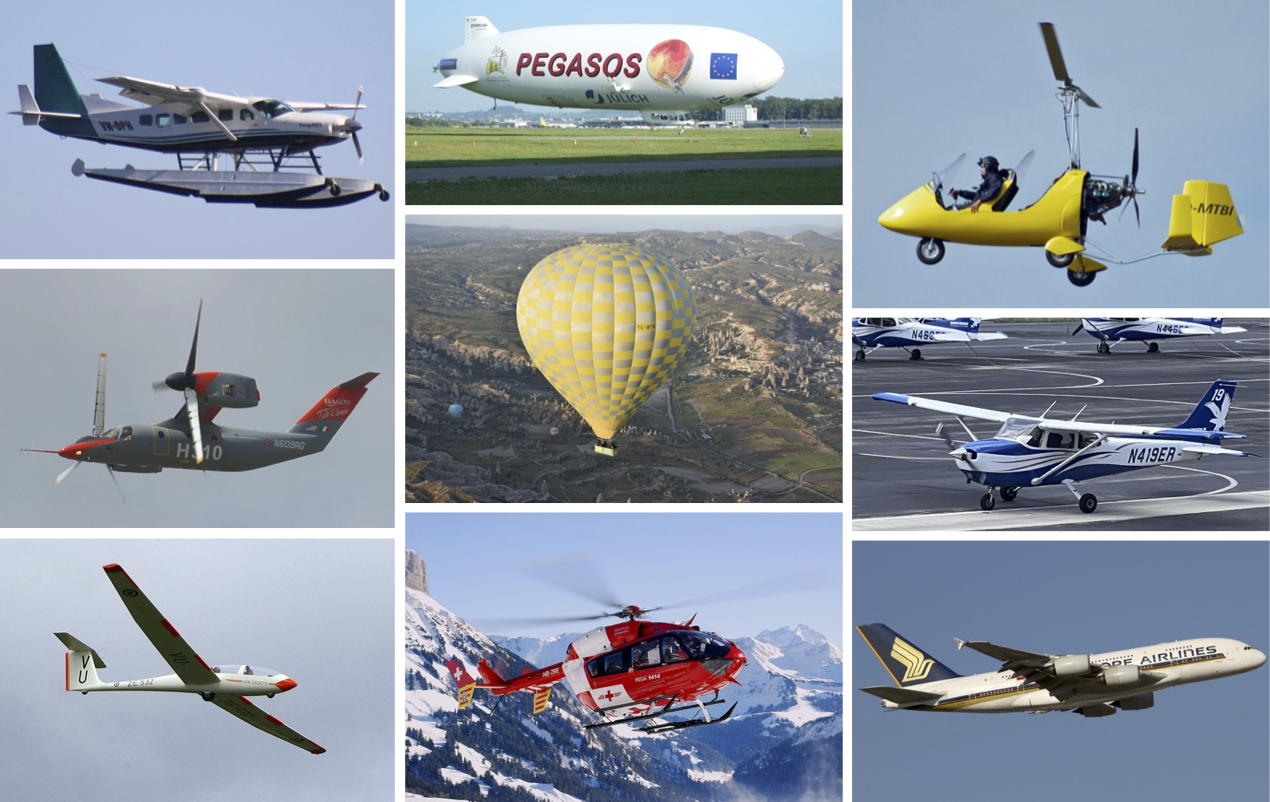
Aerospace engineers must become familiar with how aircraft are classified, certified, and used, whether as a civilian airliner for passenger transport, a general aviation airplane for training and recreation, a military aircraft for combat, or another type of aviation asset. This distinction is fundamental, as an aircraft’s classification determines the specific rules and regulations governing its engineering design, manufacturing, testing, and flight operations, including piloting. Understanding these classifications ensures compliance with the appropriate standards throughout the aircraft’s lifecycle.
Furthermore, aerospace engineers must understand the regulatory requirements applicable to the aircraft they design and stay current with periodic updates, as regulations are often revised. A firm grasp of these regulations and guidelines is essential. Engineers must also consider how regulations impact their design choices, balancing safety, performance, and cost. Ultimately, the goal is to develop safe, reliable, and cost-effective aircraft that meet customer operational and budgetary needs while adhering to the regulatory framework.
- Identify and categorize various aircraft types within the aviation spectrum, including commercial airliners, general aviation aircraft, military aircraft, rotorcraft, unpowered aircraft, lighter-than-air vehicles, and unoccupied or uncrewed aerial systems (UAS).
- Understand the roles and responsibilities of key aviation regulatory bodies, including the Federal Aviation Administration (FAA) in the United States and the International Civil Aviation Organization (ICAO) globally.
- Find out about the U.S. Federal Aviation Regulations (FARs) and European Aviation Safety Agency (EASA) regulations, including their scope, purpose, and impact on aircraft design, certification, and operations.
- Understand the various requirements, documentation, and certification processes necessary to ensure a civil aircraft’s airworthiness, including compliance with regulatory safety and maintenance standards.
In practice, aircraft are best classified by using criteria besides just the in-service use of the aircraft, such as the nature of its propulsion system (e.g., propeller or jet), the number of engines (e.g., single-engine or multi-engine), land-based or sea-based, or in some other way, such as primarily passenger-carrying or primarily cargo-carrying. In some cases, the classification may be unambiguous. However, in other cases, a precise aircraft classification, such as for certification and issuing a Certificate of Airworthiness, may require careful qualification, e.g., for an amphibious aircraft or a tiltrotor. Most aircraft, however, will fall clearly into a defined classification based on their intended purpose and use.
Civil aircraft are formally classified by the U.S. Federal Aviation Administration (FAA) according to categories, classes, and types. For example, one aircraft category is an airplane, and a class of an airplane is a single-engine, land-based airplane, one type being the Cessna 172, as shown in the photograph below. In addition, other classes of airplanes include multi-engine and seaplanes, both of which are different classes of “fixed-wing” aircraft.
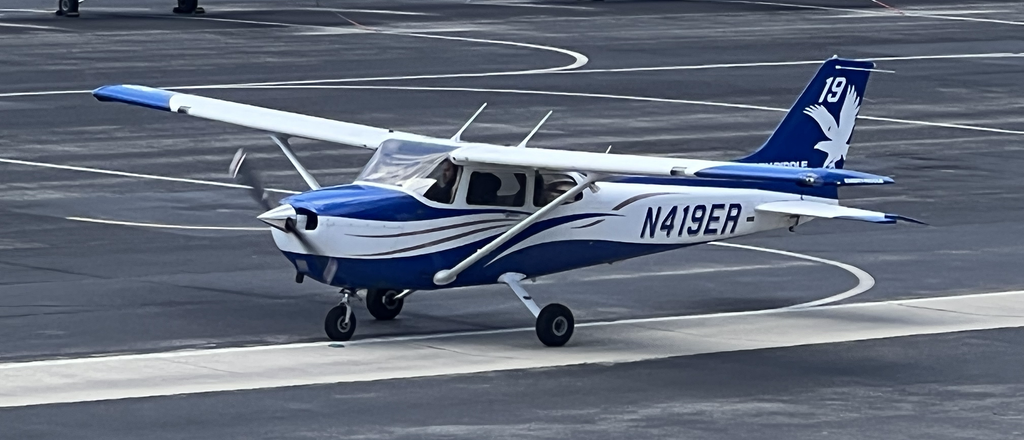
Multi-engine airplanes and larger aircraft are more complex from both an engineering design and operational perspective. Another category of aircraft is the “rotating-wing” airplane, also known as a rotorcraft. Rotorcraft classes include helicopters, gyroplanes (also known as autogiros), and tiltrotors. A tiltrotor is a rotorcraft concept that combines elements of a helicopter with those of an airplane and falls into the “hybrid” classification as a powered-lift aircraft. There are also many less-common aircraft types in the aviation spectrum, such as powered parachutes and weight-shift-controlled airplanes, such as hang gliders.

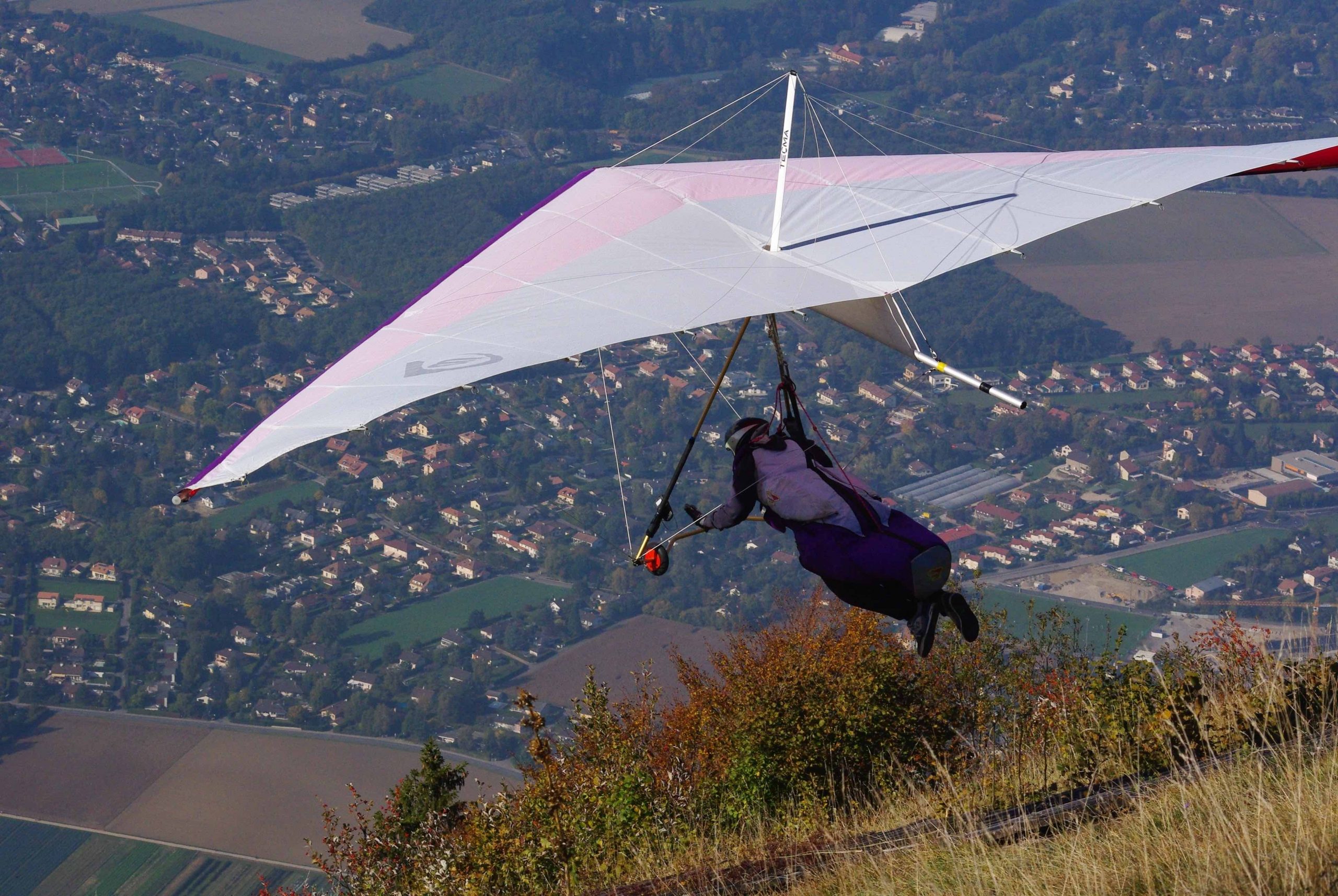
Some form of armed service operates military aircraft, typically of two types: combat or non-combat. Combat aircraft are designed to attack and destroy enemy equipment using their ordnance or to intercept and render other aircraft, such as fighters, inactive. Fighter aircraft are typically designed to fly at high speeds, often exceeding the speed of sound, and possess excellent maneuverability and agility.
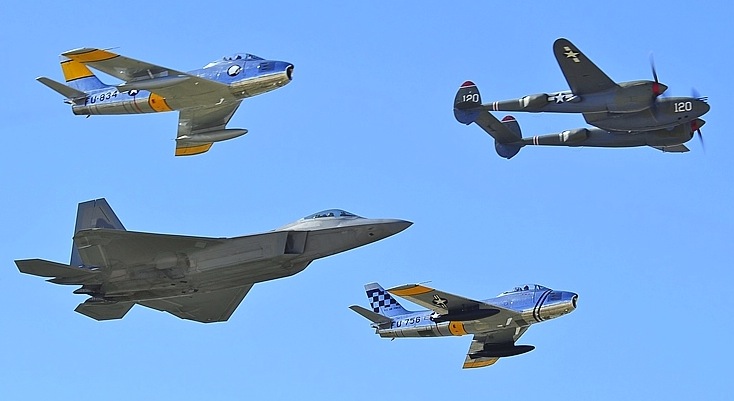
On the other hand, non-combat military aircraft can include transport aircraft used to move personnel and cargo, as well as aircraft used for pilot training. Military aircraft must meet the same strict safety and performance standards as their civilian counterparts. They must also be designed to perform their mission in a hostile environment and withstand damage. Military aircraft often require specialized features such as armor, defensive systems, and weapons. Additionally, they are equipped to be compatible with military-specific support equipment and infrastructure.
Overview of Aircraft Classifications
The design, operation, and regulations of aircraft vary greatly depending on their type and intended use. For example, military aircraft must meet different requirements than commercial airliners, and small general aviation aircraft are subject to different regulations than larger commercial aircraft. Each type has unique characteristics and operational requirements that must be considered in its design and regulation; therefore, a one-size-fits-all approach is neither practical nor effective.
Different aircraft types have varying operational requirements and must be designed to meet them, which, in turn, determines the rules and regulations that apply to them. The aircraft’s size, weight, complexity, intended use, and human factors all contribute to determining the specific regulations and standards that must be met. The regulatory authorities must ensure aircraft and passenger safety, which is why regulations for each aircraft type can vary widely. More stringent rules will govern larger, heavier, and more complex passenger-carrying airplanes, comprising more complicated requirements. Again, different rules and regulations will necessarily apply to the design and operation of crewed versus uncrewed aircraft.
Uses of Aircraft
In all the various ways aircraft may be classified, the most prominent and fundamental distinction is whether they are intended for civil or military use. For example, commercial airplanes are typically designed to transport passengers, cargo, or both, often over very long distances. These larger passenger-carrying types are called airliners, i.e., commercial airplanes used by airlines to carry fare-paying passengers safely and in comfort from one place to another. Therefore, an airliner is a type of aircraft classification to which stringent design rules and operational regulations necessarily apply, mainly because passenger safety is paramount.
Smaller civil aircraft types are used in general aviation (GA), a form of private, non-commercial aviation activity. GA includes various aircraft types, such as trainers, gliders, helicopters, homebuilts, and possibly even retired military airplanes, also known as “warbirds.” Most civil aircraft in use today are of the general aviation (GA) type. GA aircraft typically have relatively low-speed capabilities and limited range, but some smaller jet-powered business/corporate “bizjet” aircraft also fall into the GA category. Again, different standards apply to these aircraft types, depending on their exact classification, size, and gross weight.
A military aircraft is operated by the armed services and could be either a combat or non-combat aircraft type. Combat aircraft are designed to carry munitions (e.g., bombs, rockets, etc.) to attack and destroy enemy assets. Combat aircraft are further classified as fighters or bombers, with fighter aircraft being smaller and more agile by design. They are designed primarily to intercept enemy aircraft and engage in air-to-air combat. The aircraft’s high-speed flight capability, maneuverability, and agility are essential. However, many such military aircraft are hybrid or “dual-use” variants, e.g., fighter-bomber aircraft.
Non-combat aircraft may fulfill many roles, including reconnaissance, transport, in-flight refueling, and search and rescue. Successful non-combat military aircraft have often been derivatives of civil aircraft designs, adapted and modified to meet specific military requirements. For example, the Boeing KC-135 tanker is a derivative of the Boeing 707, but the Boeing KC-46 Pegasus will replace it. Similarly, the VC-25, also known as “Air Force One,” is a derivative of the Boeing 747. These aircraft versions typically operate in harsher military conditions compared to those of a civil airplane. They may need to carry defensive weapons or other systems, such as airborne command centers or electronic countermeasures, to protect themselves.
Civil Aircraft Types & Classifications
The FAA classifies airplanes for various purposes, including their design and flight operations. For design, different rules and regulations apply specifically to the type, size, and weight of the airplane, i.e.,
- Airplanes that can carry nine or fewer passengers, with a gross takeoff weight of up to 12,500 lb (5,670 kg).
- Normal or non-acrobatic flight operations.
- Utility or limited acrobatic flight operations.
- Acrobatic use, i.e., unlimited flight maneuvers.
- Propeller-driven airplanes with more than 19 seats or a maximum takeoff weight greater than 19,000 lb (8,618 kg).
- Multi-engine airplanes with 19 or fewer passengers, with a gross takeoff weight of less than 19,000 lb (8,618 kg).
- Jet (turbine) propelled airplanes with ten or more seats or a maximum takeoff weight greater than 12,500 lb (5,670 kg).
For flight operations and piloting, the FAA classifies aircraft according to categories, classes, and types. The primary categories and classes of civil aircraft are:
- Airplanes:
- Single-engine land (SEL)
- Multi-engine land (MEL)
- Single-engine sea (SES)
- Multi-engine sea (MES)
- Rotorcraft:
- Helicopter
- Gyroplane
- Tiltrotor
- Lighter-than-air or aerostats:
- Airship (e.g., a blimp or dirigible)
- Balloon (e.g., a hot-air balloon)
- Glider (or sailplane).
Other aircraft categories include:
- Powered-lift (which may consist of uncrewed aerial vehicles or UAVs).
- Powered parachutes:
- Land operation.
- Sea operation.
- Weight-shift aircraft (e.g., hang-gliders):
- Land operation.
- Sea operation.
- Rockets
Remember that an aircraft’s class refers to the subdivisions within each aircraft category. In the airplane category, a class can refer to either the single-engine land class or the multi-engine land class, or to either the single-engine sea class or the multi-engine sea class. The aircraft type refers to a specific make and model of aircraft within a given class; e.g., a Boeing 787 or an Airbus A380 would be a type of airplane in the multi-engine land class.
In the rotorcraft category, a class can be a helicopter, a gyroplane (also known as an autogiro), or a tiltrotor. A type of helicopter is the Sikorsky S-76, and a type of tiltrotor is the AW609. Notice that a tiltrotor is a combination of rotorcraft and a form of powered-lift airplane, distinct from a helicopter. A gyroplane, or autogiro, may superficially look like a helicopter. However, its main rotor is unpowered, so it only produces lift if the aircraft moves forward and/or downward to spin the rotor. Another type of powered-lift aircraft would use downward thrust from the jet engines to produce the necessary lift, rather than relying on rotors, for example, a vertical takeoff and landing (VTOL) aircraft that utilizes jet thrust only.
In the lighter-than-air category, the two classes are airship and hot-air balloon; the lift on an airship is produced by buoyancy from the displacement of air by the helium-filled gas envelope. The types of airships are a blimp and a dirigible; the primary difference is that a blimp has a non-rigid gas envelope, whereas a dirigible has its gas envelope supported by a rigid, frame-like internal structure. With some exceptions, both blimps and dirigibles are powered by propellers or ducted fans and steered using a rudder and elevator.
Gliders and sailplanes are relatively simple aircraft because they have no engine (unless classified as a self-launching sailplane) and have few systems, specifically no hydraulics and limited or no electrical systems. A sailplane is typically thought of as a high-performance glider. An example of a weight-shift aircraft would be a hang glider, which has no conventional flight control surfaces and relies on kinesthetic control.
Unoccupied Aircraft
An uncrewed or unoccupied aircraft (UAV) or an unoccupied aircraft system (UAS), often referred to as a drone, is an aircraft without a human pilot physically onboard. Instead, an operator on the ground controls the UAV’s flight remotely through a communications link. One or more pilots fly crewed aircraft, but uncrewed or unoccupied aerial vehicles (UAVs) may be flown remotely from a ground-based station or fly autonomously using signals from ground-based sensors. UAS is often used to refer to drones because it emphasizes the importance of elements beyond the UAV, including ground-based control systems and support equipment, such as a command center.
The FAA defines a UAV as a “powered, aerial vehicle that does not carry a human operator, uses aerodynamic forces to provide vehicle lift, can fly autonomously or be piloted remotely, can be expendable or recoverable, and can carry a lethal or nonlethal payload.” This means that a UAV will generally fall into the category of powered-lift aircraft. Small UAVs primarily use lithium-ion (Li-ion) or lithium-polymer (Li-Po) batteries to power their electric motors. At the same time, larger UAVs may rely on internal combustion engines, hybrid internal combustion engines, or electrical powerplants.
The last decade has witnessed explosive growth in the use of UAVs for both military and civilian applications. The quadcopter design has become a prevalent configuration for smaller UAVs, as illustrated in the photograph below. Most UAVs carry cameras, although other sensor packages may also be used. The relationship between UAVs and radio-controlled model aircraft has become increasingly indistinct; in fact, UAVs may or may not include aircraft previously classified as model aircraft. For example, in the United States, the FAA defines any uncrewed or unoccupied aircraft as a UAV, regardless of its size or weight. However, a radio-controlled aircraft always formally becomes a UAV if it has a flight control system that allows it to fly autonomously.
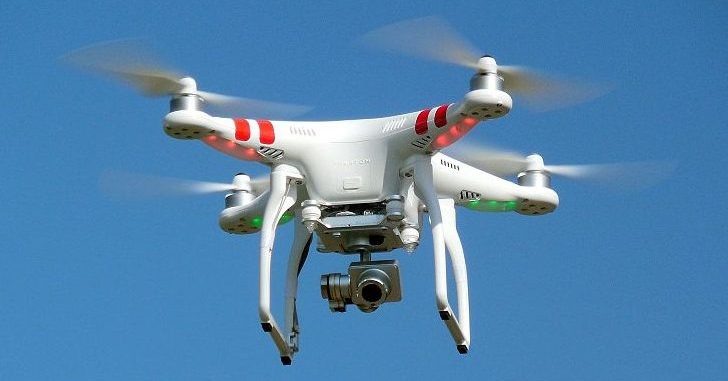
Aviation & Aeronautical Regulations
The vast scope and complexity of aviation and aeronautical/aerospace engineering necessitate standardized regulations to govern the myriad processes, from aircraft design to flight operations and piloting. Regulations are not developed to stifle aeronautical progress but to ensure safety and consistency in aircraft design and operation. They are also necessary to ensure the safety of all related aeronautical and aviation matters and to protect the general public from unnecessary risks; such regulations also help to maintain national security.
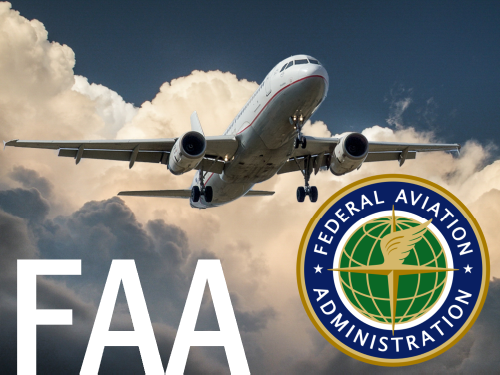
In the United States, the Federal Aviation Regulations (referred to as the “FARs”) are regulations and standards published by the Federal Aviation Administration (FAA) that govern all civil aviation activities. The FAA is the sole authority granted by the U.S. Government to regulate all aspects of civil aviation through its regulatory and legal powers. The FAA technically and legally enforces the FARs, i.e., the FARs carry the force of U.S. law. Therefore, beyond the airworthiness issues and operational requirements governed by the FARs, any violation of the FARs can result in the suspension of FAA licenses or certificates, as well as significant fines or imprisonment for those involved in proven violations.
The FARs were established in 1965 from the existing U.S. Civil Air Regulations. These regulations originally stemmed from the policies established after the formation of the International Civil Aviation Organization (ICAO). The ICAO is an agency of the United Nations and was formed in 1947 after the Chicago Convention of 1944, where countries from around the world met in Chicago to discuss the future of civil aviation. The ICAO adopts standards and sets policies so that “International civil aviation may be developed in a safe and orderly manner and that international air transport services may be established based on equality of opportunity and operated soundly and economically.”
The ICAO has 191 member states (all of the UN member states) that work with various aviation organizations at all levels to develop international Standards and Recommended Practices (SARPs) for all aspects of civil aviation. The ICAO also coordinates international air travel regulations and promotes the safety, security, and environmental sustainability of civil aviation. In addition, the ICAO ensures that aviation regulations are unified, allowing all member states to provide uniform design and safety requirements. To this end, the SARPs form the basis for all civil aviation regulations, such as the Federal Aviation Regulations (FARs) in the U.S. and the European Aviation Safety Agency (EASA) in Europe.

Most nations of the world have an equivalent to the FAA in the form of a Civil Aviation Authority (CAA), a national regulatory body responsible for all aspects of that nation’s aviation matters. All CAA organizations subscribe to the ICAO SARPs to adopt a broadly accepted aviation policy and establish appropriate legislation to regulate aircraft design and operations. Technically, the ICAO SARP recommendations are not legally binding. However, as previously mentioned, any legal requirements are usually formally codified in the respective CAA regulations of each country, including the FARs in the U.S.
It is essential to note that the FAA does not directly regulate any aspect of military aviation, except for overseeing military flight operations in civilian airspace. Nevertheless, military aviation regulations generally parallel the FAR regulations and, in some cases, may be more stringent. However, as previously mentioned, the FAA continues to publish design and operational requirements for military aircraft based on commercial designs, which would apply to militarized civil aircraft.
The SARPs also serve as the basis for many military aviation standards, although these tend to be less formally structured than the FARs. There are no open publications that discuss military airworthiness standards or procedures. It must be acknowledged that military aircraft, by design, require the flexibility to operate with a higher level of risk tolerance than would be permitted with any civil aircraft, not least because they often need to carry bombs, missiles, and other munitions. Nevertheless, military aircraft are usually designed to meet, if not exceed, all relevant civil airworthiness standards.
Military Aviation Authorities (MAAs) have been established in many countries, similar to Civil Aviation Authorities (CAAs). These MAAs adopt regulations underpinned by the International Civil Aviation Organization (ICAO) standards and policies. For example, defense standards, such as military standards MIL-STD or MIL-SPEC (or, informally, “MilSpecs”), are derived from ICAO standards that help achieve aviation standardization objectives set by the U.S. Department of Defense (DoD). In the U.K., the Military Aviation Authority operates under the auspices of the U.K. Ministry for Defense (noting that “Defence” is the British spelling of “Defense” in American English).
The EASA, or European Aviation Safety Agency, was established in 2002 by the European Commission, replacing the Joint Aviation Requirements (JARs) previously set by the European Union (EU) member states. Like all CAAs, EASA formalizes aviation safety, provides technical advice to all EU member states, and issues airworthiness and type certificates for civil aircraft. EASA originated in the early 1970s and was known as the Joint Airworthiness Authority (JAA). Its objectives are the same as the FAA’s FARs: standardizing certification requirements for large civil aircraft and aircraft engines. Today, EASA plays a broader role in aviation and aerospace engineering, governing all civil aviation activities in Europe, much as the FAA does in the U.S.
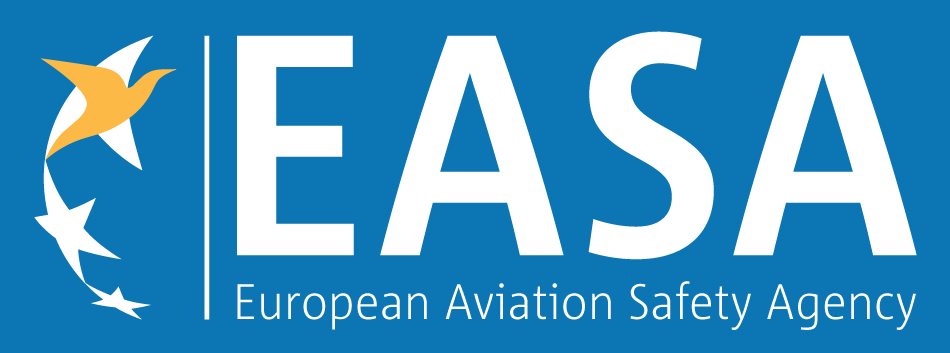
Check Your Understanding #1 – The role of the ICAO in the global standardization of civil aviation
Explain the role of the International Civil Aviation Organization (ICAO) in globalizing civil aviation. Discuss the impact of any specific ICAO standard and recommended practice (SARP) of your choice on aircraft engineering and design. From an engineering perspective, provide an example of how this SARP has been implemented and its effects on global aviation.
Show solution/hide solution.
The International Civil Aviation Organization (ICAO) plays a critical role in the global regulation and standardization of civil aviation, ensuring safety, security, efficiency, and environmental protection. As a specialized agency of the United Nations, ICAO develops SARPs that member countries implement to harmonize civil aviation practices worldwide. These SARPs encompass various aspects, including airworthiness, operations, personnel licensing, accident investigation, and environmental protection. For instance, Annex 8 establishes essential airworthiness requirements that influence how engineers design and maintain aircraft to meet rigorous safety standards. Similarly, Annex 6 outlines operational procedures that impact aircraft design to handle various flight conditions and emergencies effectively. These regulations drive technological innovation, ensuring that new aircraft, such as the Boeing 787 Dreamliner and the Airbus A350, meet global safety, performance, and environmental standards.
Specific ICAO standards will affect aircraft engineering, design, and operation. For example, adopting Enhanced Ground Proximity Warning Systems (EGPWS) and Automatic Dependent Surveillance-Broadcast (ADS-B) technology, as guided by ICAO SARPs, has improved operational safety and situational awareness. ICAO’s environmental standards in Annex 16 promote reductions in noise and emissions, leading to the development of more efficient engines, such as the Rolls-Royce Trent XWB. These advancements demonstrate how SARPs enhance safety and operational efficiency while promoting environmental sustainability. ICAO’s framework ensures that the aviation industry adheres to consistent, high standards, facilitating global interoperability and ultimately contributing to a safer, more efficient, and sustainable international aviation system.
Details of the Federal Aviation Regulations
The FARs are formally a part of Title 14 of the Code of Federal Regulations (CFR), which governs “Aeronautics and Space.” The aeronautical FARs can be found online as sections or parts 1 to 199 of the Code of Federal Regulations (e-CFR). Parts 400 to 1199 of the CFR pertain to commercial space operations. While the FARs are technically organized into many parts, not all are currently in use, and some (mainly the even-numbered parts) have been left open for future use by the FAA. The latter parts of CFR Title 14, specifically Parts 1200 to 1299, pertain to NASA operations, while Parts 1300 to 1399 concern the stabilization of the air transportation system.
The FARs were previously published only in hard copy, and because they are voluminous, they require a small library to store them all. However, the eFARs under Title 14 are readily available online. The legalistic undertones of the FARs will not go unnoticed by most engineers, perhaps further affirming the place of these regulatory documents within aviation law.
FARs for Aeronautical Engineers
Some valuable parts of the FARs for aeronautical engineers include (but are not limited to) the following:
- Part 23 – Airworthiness Standards: Normal, Utility, Acrobatic, and Commuter Airplanes.
- Part 25 – Airworthiness Standards: Transport Category Airplanes.
- Part 27 – Airworthiness Standards: Normal Category Rotorcraft.
- Part 29 – Airworthiness Standards: Transport Category Rotorcraft.
- Part 33 – Airworthiness Standards: Aircraft Engines.
- Part 35 – Airworthiness Standards: Propellers.
- Part 39 – Airworthiness Directives.
- Part 91 – General Operating and Flight Rules.
- Part 107 – Small Unmanned (Unoccupied) Aircraft Systems.
- Part 125 – Certification and Operations: Airplanes Having a Seating Capacity of 20 or More Passengers or a Payload Capacity of 6,000 lb (2,721 kg) or More.
FAR Parts 23 and 25, as well as Part 33, are of primary relevance to most aeronautical engineers. These parts will cover the vast majority of airplanes designed and built in accordance with FAA airworthiness standards. In this regard, airworthiness can be defined as the ability of an aircraft or other airborne system to operate safely and without significant hazards to the aircrew, ground crew, passengers (if applicable), or the general public at large.
Part 23 contains the prescriptive airworthiness standards that must be met for the issuance of a Certificate of Airworthiness to airplanes (referred to as Normal, Utility, Acrobatic, or Commuter Airplanes), and Part 25 refers to Transport Category airplanes (i.e., the larger, passenger-carrying commercial airplanes or airliners). These parts of the FARs also explain how such airworthiness standards are to be applied and demonstrated to obtain a Certificate of Airworthiness. These parts of the FARs are certification regulations developed over many years to ensure that new airplanes are fully airworthy and safe for both crew and passengers. For example, the relevant regulations in Parts 23 and 25 include standards that govern the structural loads on airframes (in the air and on the ground), all aspects of flight performance, flight stability and control characteristics, gust loads, maneuvering flight, low-speed flight, and stalling characteristics, all types of flight systems, various types of safety mechanisms and emergency procedures, engines, etc.
Obviously, not all airplanes are intended for the same purpose. Additionally, some airplanes are more complex than others, so the regulations need not apply uniformly to every type of airplane. For example, a twin-engine turboprop or “commuter” airplane, which carries passengers, is more complex in terms of design and operation than a single-engine, two-seater training airplane. Therefore, more stringent standards must be applied to the commuter airplane, and commensurate regulations would apply to the training airplane.
To this end, the FAA regulations within Part 23 are subdivided into design and airworthiness regulations that will apply specifically to the type, size, and weight of the airplane, i.e.,
- Airplanes that can carry nine or fewer passengers, with a gross takeoff weight of up to 12,500 lb (5,670 kg).
- Normal or non-acrobatic operation; “non-acrobatic” is defined that the aircraft’s bank angle during flight not exceed 60 degrees.
- A utility or limited acrobatic operation in which the bank angle during flight can reach between 60 and 90 degrees.
- Acrobatic use has no bank angle or other flight attitude restrictions, allowing unlimited flight maneuvers.
- The commuter category is multi-engine airplanes with 19 or fewer passengers. These aircraft types must have a gross takeoff weight of less than 19,000 lb (8,618 kg).
FAR Part 25 pertains to airworthiness and other standards for airplanes in the transport category. Transport category airplanes are defined as one of the following:
- Jet (turbine) propelled airplanes with ten or more seats or a maximum takeoff weight greater than 12,500 lb (5,670 kg).
- Propeller-driven airplanes with more than 19 seats or a maximum takeoff weight greater than 19,000 lb (8,618 kg), i.e., do not fall into the commuter category of Part 23.
As stated in Part 23, the various regulations cover airframe loads, performance, stability and control, stalling characteristics, engines, and other related aspects.
FAR Part 26 (one of the few even-numbered parts) was added more recently to address the continued airworthiness standards and safety improvements necessary to ensure the continued airworthiness of larger transport category airplanes, which in some cases are now reaching operational lives of 40 years or more.
FAR Parts 27 and 29 pertain to the rotorcraft airworthiness standards in the normal and transport categories, respectively. The standard category includes rotorcraft with a maximum takeoff weight of up to 7,000 lb (3,175 kg). Examples of types in this category would be the Schweizer 300 and the Bell 429 helicopters. For heavier rotorcraft or those carrying ten or more passengers, Part 29 regulations will apply. As rotorcraft get even bigger and heavier, they need to be held to even higher standards to ensure their airworthiness, so rotorcraft that weigh more than 20,000 lb (9,100 kg) are certified under the so-called “Category A” standards, as defined within the regulations of Part 29.
What are the differences between the FARs and the EASA regulations?
The Federal Aviation Regulations (FARs) and the European Union Aviation Safety Agency (EASA) regulations differ slightly in their approach to aircraft design and certification. Under the U.S. Department of Transportation, the FAA enforces the FARs, which apply specifically to U.S. aviation. The FAA follows a prescriptive-based approach, where compliance is met by adhering to detailed technical standards. Aircraft certification in the U.S. also follows a Type Certificate (TC) and Supplemental Type Certificate (STC) process, ensuring that aircraft designs meet stringent regulatory requirements before they are produced and operated. The FAA directly oversees the certification process for aircraft manufacturers, suppliers, and maintenance organizations.
In contrast, EASA centralizes certification for all EU member states under its Part 21 regulatory framework, offering a more performance-based approach that provides flexibility in meeting compliance standards. EASA’s centralized system eliminates the need for CAAs to issue separate certifications, creating a balanced regulatory environment across Europe. Additionally, EASA regulations require Continuing Airworthiness Management Organizations (CAMOs) to oversee long-term aircraft maintenance and safety, whereas the FAA does not explicitly require this. While both regulatory bodies ensure safety, airworthiness, and design compliance, EASA focuses on aviation standardization across many countries, whereas the FAA establishes a U.S.-centric, rule-based framework. Understanding these differences and distinctions is crucial for aerospace engineers and manufacturers involved in aircraft certification.
Certificate of Airworthiness.
A Certificate of Airworthiness (or “C of A”) is a permit that authorizes a specific aircraft to fly in both national and international airspace. Every aircraft must have its own Certificate of Airworthiness (C of A), an example of which is shown in the figure below. Generally, granting a Certificate of Airworthiness to an aircraft by an ICAO-recognized certification authority will also allow that aircraft to be flown in the airspace of any ICAO member state. The Certificate of Airworthiness is, in effect, the “graduation diploma” for an aircraft, proving that it has successfully met or exceeded the standards of various tests imposed as part of the certification process.

Most of the documentation and other evidence needed to gain a Certificate of Airworthiness is obtained through flight testing. However, substantial ground testing is also usually required. For example, most structural tests are better carried out on the ground, where loads can be applied in a controlled manner, and engineers can make detailed measurements of structural deformations and material strains. Some tests, such as cabin pressurization and specific engine tests, are unsafe to conduct in the air; therefore, they are performed on the ground under more controlled conditions. Demonstrations of engine performance can also be better monitored on the ground, including tests such as water and bird ingestion, as well as various types of prescribed failures.
An airworthiness certificate remains valid as long as the aircraft meets its approved type design and is in a condition for safe operation through regular maintenance and preventive maintenance in accordance with the FARs. The registration mark (in box 1) is unique to the aircraft and includes a prefix indicating the country where the aircraft is certified. The prefix “N” is used for US-registered aircraft. Other examples are “C” for Canada, “F” for France, “D” for Germany, and “G” for Great Britain.
In the FARs, the FAA uses the term “category” to refer to both a category of aircraft (for piloting purposes) and a category of function (for certification purposes). The designations “Transport, Commuter, Normal, Utility, or Aerobatic (in box 4) are endorsements on the certificate of airworthiness based on the certified (design) function of an aircraft, e.g., airplane, even though these functions are often called categories for pilot certification. Other category endorsements include Limited, Experimental, Restricted, Provisional, Light-Sport, or Primary. However, aircraft categories and classes are still used to denote different aircraft types for design and piloting. An airplane is still an airplane, regardless, but it could be one of the airworthiness designations, e.g., an airplane with a “transport” function, so the rules appear under Aircraft/Airplane/Transport. Likewise, single-engine versus multi-engine land/sea are important class designations because different rules apply to design and piloting.
A summary of the certification categories is as follows:
- Transport: An aircraft with varying seating and weight criteria based on engine type, with jet engine transports rated for more than 10 seats and over 12,500 pounds, and piston engine transports capable of carrying up to 19 people and weighing more than 19,000 pounds.
- Commuter: A multi-engine propeller aircraft for transporting up to 19 passengers, with a weight limit of under 19,000 pounds.
- Normal: An aircraft not approved for aerobatic flight, with a capacity of 9 or fewer passengers and a maximum takeoff weight of 12,500 pounds.
- Utility: An aircraft with a maximum of 9 passenger seats plus pilot seats, weighing up to 12,500 pounds, and authorized for limited aerobatic maneuvers.
- Aerobatic: An aircraft capable of performing aerobatic flight with limited restrictions, with a maximum of 9 seats plus the pilot and a weight limit of 12,500 pounds.
- Limited: A category for military aircraft modified or converted for civil use.
- Experimental: A category covering various aircraft, including kit-built, amateur-built, unoccupied, light sport, research and development, and air racing projects.
- Restricted: A category for aircraft built for specific purposes, such as agriculture, conservation, surveying, weather control, or advertising, which can only be used for their designated purpose.
- Provisional: A category for aircraft that is only certified for a limited duration, e.g., one year.
- Light Sport (LSA): A sport aircraft category that does not fall under the gyroplane, kit-built, or ultralight categories.
- Primary: A category for aircraft manufactured with a production certificate and intended for personal use. Carrying persons or property for hire is generally prohibited for this category.
Not all aircraft will have, or even need, a Certificate of Airworthiness and can be operated in the “Experimental” category. This category would be for an aircraft that is either not yet certified but undergoing certification testing (i.e., a temporary classification) or is amateur or kit-built and will remain forever in the “Experimental” category. The Experimental Aircraft Association (EAA) oversees the construction of amateur-built and kit aircraft.
Other Airworthiness Documents
As previously discussed, the primary airworthiness document is a Certificate of Airworthiness, which serves as the permit to fly a certified aircraft. The Certificate of Airworthiness must be carried and displayed on board the aircraft at all times when it is in operation. Other documentation relevant to aircraft design, maintenance, flight operations, and safety can be found in the FAA’s Regulatory & Guidance Library (RGL), which is now known as the Dynamic Regulatory System, which is a “Comprehensive Knowledge Center of Regulatory and Guidance Material from the Office of Aviation Safety and other Services and Offices.” Documents to be found there include:
- Advisory Circulars (ACs).
- Airworthiness Directives (ADs).
- Lists of Supplemental Type Certificates (STCs).
- Lists of Parts Manufacturer Approval (PMA).
- Legacy certification regulations are used as reference materials.
While ACs contain essential information regarding the aspects of the given aircraft, compliance is purely advisory. ADs require mandatory compliance from the owner/operator of the aircraft to maintain airworthiness and carry the lawful force of the FARs. Maintenance to comply with an AD must be documented or otherwise recorded in the aircraft logs. Remember that non-compliance with the FARs may result in legal consequences, including fines or even imprisonment for egregious violations that cause loss of life or well-being. These documents can also be found on the FAA’s Regulatory Guidance Library (RGL) website.
Aircraft manufacturers may also issue airworthiness documentation. Service Bulletins (SBs) alert aircraft owners and operators to potential airworthiness issues. SBs are typically minor issues and often involve preventive maintenance (e.g., corrosion concerns or minor fatigue cracking) that are less likely to develop into more severe issues if addressed as part of routine maintenance. Only commercial aircraft operators are required to comply with all SB notifications. However, most private non-commercial operators will still adhere to the manufacturer’s airworthiness recommendations as part of the aircraft’s standard maintenance protocols, relieving the operator from liability if an incident or mishap is tied to the SB issue.
Regulations for Unoccupied Aircraft & Drones
An uncrewed or unoccupied aircraft (UAV) or uncrewed or unoccupied system (UAS), sometimes referred to as a “drone,” is an aircraft without a human pilot physically onboard. Part 107 of the FARs covers a broad spectrum of commercial uses for drones weighing less than 55 lb (24.9 kg). The FAA introduced these regulations recently because of the proliferation of various commercially available drones, some of which were being flown at high altitudes and speeds that posed a danger to other aviation operations or the general public. While Part 107 rules are flexible enough to accommodate future technological innovations, they also impose restrictions on the operations of all types of drones for safety considerations. FAR Part 107 establishes a series of “common sense” rules requiring a drone operator to avoid all kinds of crewed aircraft and never operate such a drone carelessly or recklessly.
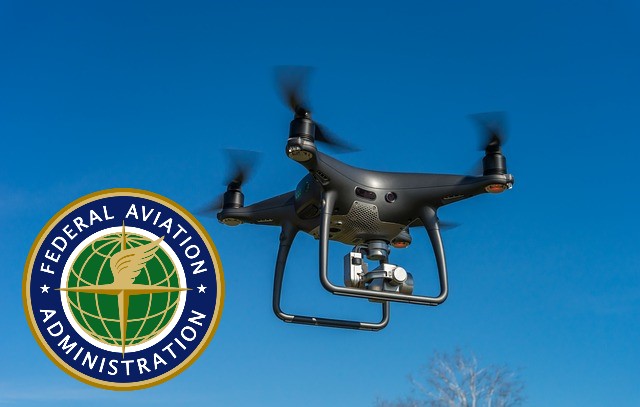
For now, with some exceptions, such unoccupied aircraft must be flown within line of sight, i.e., the operator must be able to see the drone at all times with the naked eye or “unaided sight,” so the use of binoculars is prohibited. Additionally, the drone’s maximum allowable altitude is 400 ft (122 m) above the ground or higher, provided it is flown within 400 ft (122 m) of a structure. Its maximum allowable airspeed is 100 mph (161 kph). Finally, note that the FAA still considers a UAV or drone to be an aircraft because its definition includes any “contrivance” that flies, contrary to definitions used by others.
A remote pilot airman certificate is required to operate the controls of a UAS, UAV, or drone under FAR Part 107. The FAA does not require an aircraft in this category to comply with any airworthiness standards, nor does it require the aircraft to comply with any certification standards. Instead, FAR Part 107 requires visual and operational pre-flight checks to ensure the drone’s flight and safety systems are functioning correctly. The FAA also requires that a UAS, UAV, or other drone be available for inspection or testing upon request, so records must be maintained. Because these parts of the FARs also carry the force of U.S. law, the failure of an owner or operator of a drone to comply with the requirements of Part 107, even unintentionally, could expose them to fines or other civil penalties.
Check Your Understanding #2 – Common-sense operation of drones near populated areas
The introduction of diverse types of UAVs into the aviation spectrum continues to raise concerns among the general public, regardless of the FAA’s stance on regulating their use. Discuss some of the “common sense” reasons for these public concerns. What specific public concerns might be associated with drone operations at the ERAU Daytona Beach campus, which is near an airport and also a NASCAR racetrack?
Show solution/hide solution.
Common-sense reasons for these public concerns include various safety risks, such as loss of power or control, and threats where drones could be used for malicious purposes. Privacy issues are significant because drones equipped with cameras can capture images and videos without consent, raising fears of unauthorized surveillance. UAVs pose security threats because they could be used for malicious purposes, such as criminal activities. Noise pollution from drones can disrupt quiet neighborhoods. While the noise from any one drone is comparatively low, the perception of noise “annoyance” increases with the number of drones and the frequency of their operation. The risk of UAVs interfering with airport operations, experiencing power failures, and crashing into large crowds during NASCAR events poses significant safety concerns. The top priority at the ERAU campus is the safety and security of staff, students, and faculty, as well as ensuring that drone operations do not interfere with classes, outdoor activities, and events.
Regulations for Commercial Space Operations
Spacecraft come in many types, shapes, and sizes, including single-stage and multi-stage rockets, reusable spacecraft, satellites, and interplanetary probes. Commercial space and launch vehicles are manufactured and marketed by private companies. Several companies are currently developing orbital and suborbital vehicles for various missions, including space tourism. The recent launches of space tourists on the Virgin Galactic and Blue Origin spacecraft suggest that commercial space activities will become increasingly common in the coming decades. However, these vehicles are not formally classified as aircraft for design or operational purposes.
Regulatory responsibility for the commercial space industry lies with the FAA and its Office of Commercial Space Transportation (AST), a division of the FAA. However, the FAA does not regulate any spacecraft launches undertaken by U.S. government organizations, e.g., NASA. In this regard, the FAA defines a commercial spacecraft launch as one of the following:
- The FAA has licensed the launch.
- The launch contract for the primary payload was open to international competition.
- The launch was privately financed, with no government support.
The FAA’s commercial space transportation regulations are outlined in Parts 400 to 460 of the Code of Federal Regulations (CFR) Title 14. Regulations for commercial space activities encompass a range of measures to ensure safety, environmental protection, and compliance with international obligations.
- Part 401 – General Requirements: This part outlines the general requirements for launch and re-entry activities, including licensing procedures, financial responsibility, and safety considerations.
- Part 415 – Launch Safety: This part outlines safety requirements for launch and re-entry operations, ensuring the protection of the public and property.
- Part 417 – Launch Safety: This provides specific requirements and criteria for launch safety analysis.
- Part 431 – Launch and Reentry of a Reusable Launch Vehicle (RLV): Pertains to the licensing of reusable launch vehicles.
- Part 435 – Reentry of a Reentry Vehicle Other Than a Reusable Launch Vehicle (RLV): This section addresses the licensing of re-entry vehicles.
- Part 440 – Financial Responsibility: Outlines the financial responsibility requirements for launch and re-entry operators.
- Part 460 – Licensing and Safety Requirements for Launch: Regulations for obtaining a license for commercial space launch and re-entry operations.
Commercial space companies must obtain licenses or authorizations from relevant regulatory bodies, demonstrating compliance with safety standards and risk mitigation protocols. Additionally, they must address concerns such as space debris management, payload review, and export controls to safeguard national security interests and prevent the proliferation of technology. These regulations also often encompass frequency allocation for communication, insurance requirements, and adherence to international treaties, such as the Outer Space Treaty, which establishes principles for the peaceful use of space. The Outer Space Treaty has served as the cornerstone of international space law and has been ratified by most nations capable of exploring space. It provides a framework for cooperation and collaboration in space exploration while promoting the peaceful and responsible use of outer space for the benefit of all humanity. As the space industry expands, emerging issues like space traffic management and intellectual property rights are increasingly addressed within regulatory frameworks. This reflects the evolving nature of commercial space activities and the need for comprehensive oversight.
Summary & Closure
Aviation is a highly regulated activity, and for good reason, safety is always paramount. Uniformity of standards requires that regulations be applied to aircraft design and testing, as well as to piloting and all aspects of flight operations. The International Civil Aviation Organization (ICAO) sets standards. It adopts policies for civil aviation, but the actual regulation and enforcement of these standards are left to each country’s Civil Aviation Authority (CAA). Because the same regulations cannot (and need not) be applied uniformly to all aircraft types, specific regulations are developed for different airplane categories and classes. This includes regulations for aircraft design, testing, piloting, and flight operations, ensuring aviation safety. These regulations are crucial to maintaining consistent and uniform standards for aviation worldwide.
Most countries have a Civil Aviation Authority (CAA), such as the FAA in the U.S., which oversees all aspects of civil aviation. They are responsible for setting and enforcing regulations to ensure the safe operation of civil aviation within their jurisdiction. These regulations are essential to ensure uniformity and consistency in aircraft design, operations, and maintenance, and to promote passenger, crew, and public safety. The regulations are regularly reviewed and updated to reflect technological advancements, changes in operational practices, and emerging safety concerns. Regarding commercial space operations, regulations are necessary to strike a balance between promoting innovation and economic growth and ensuring safety, security, and sustainability in outer space endeavors. They serve as a crucial framework for guiding the activities of private companies while upholding broader societal interests and international norms in the exploration and utilization of space resources.
5-Question Self-Assessment Quickquiz
For Further Thought or Discussion
- Other than the actual flight testing of a new airplane, consider some certification tests that could (or should) be conducted with the aircraft firmly on the ground.
- The FARs aim to limit societal risk without impeding aeronautical advancements. Discuss this perspective.
- What part of the FARs pertains to drones? The continued introduction of diverse types of drones into the aviation spectrum continues to raise concerns for regulators at the FAA. Discuss the reasons as to why.
- What might be some of the specific airworthiness concerns that the FAA might be associated with “aging aircraft,” i.e., those flying aircraft 20 to 30 or more years old? Additionally, refer to Part 26 of the Federal Acquisition Regulations (FARs).
- Investigate the importance of FAR Part 36 concerning noise standards in aircraft design. How do these regulations drive innovation in noise reduction technologies, and what are the engineering trade-offs involved?
- Explain the significance of FAR Part 39 (Airworthiness Directives) in the context of aircraft maintenance and engineering. Provide examples of how Airworthiness Directives have led to significant engineering modifications and improvements.
Other Useful Online Resources
To learn more about how civil aircraft design and operation are regulated, try some of these online resources:
- To learn more about the ICAO and its functions, visit the ICAO website.
- To learn more about the FAA and its responsibilities, visit the FAA website.
- To find out more about EASA, visit the EASA website.
- FAA Regulations (FARs). The FARs govern all aspects of civil aviation in the United States.
- FAA Handbooks & Manuals. Includes various handbooks, manuals, and advisory circulars covering aircraft certification, pilot training, and air traffic control procedures.
- Find out here about the Federal Aviation Administration’s International Aviation Safety Assessment (IASA) Program.
- ICAO Standards and Recommended Practices (SARPs) are the global standards for aviation safety, security, efficiency, and environmental protection.
- ICAO Documents and Publications. Offers various documents, magazines, publications, and manuals on civil aviation regulation and operations.
- UK Civil Aviation Authority regulations and guidance material issued by the UK Civil Aviation Authority.
- European Union Aviation Safety Agency (EASA) regulations. Provides access to regulations, guidance material, and certification specifications applicable to aviation in the European Union.
- Transport Canada Civil Aviation (TCCA) regulations. Provides access to Canadian aviation regulations, standards, and advisory circulars.
- Australian Civil Aviation Safety Authority (CASA) regulations and standards. Information on regulations, standards, and advisory material issued by the Australian Civil Aviation Safety Authority.

